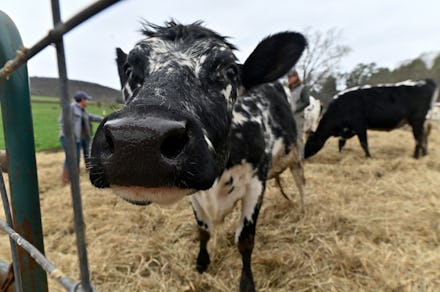How regenerative agriculture could sustain humanity — and Earth

No matter where you are in the world, one thing ties people together: We all gotta eat. But the ways people go about producing food can have disastrous consequences for the environment. With climate change already breathing down our necks, many are now pointing to sustainable methods of farming like regenerative agriculture as a blueprint for the future.
Modern agriculture has led to a number of issues worldwide. For example, monoculture farming — where you use a single plot of land to just grow one product, like corn — ruins soil fertility. And in 2018, the Intergovernmental Science-Policy Platform on Biodiversity and Ecosystem Services reported that over 75% of the world's lands had been substantially degraded. Per National Geographic, the "rapid expansion and unsustainable management of croplands" are the biggest factors driving the issue.
Now, that isn't even looking at how agriculture contributes to climate change. The Environmental Protection Agency reported that, in 2019, agriculture alone was responsible for 10% of the U.S.'s greenhouse gas emissions. So, it's clear that if things continue as they are, modern agriculture will contribute to the destruction of the world on multiple fronts. And when the land eventually goes due to the demands placed upon it by this industry, people will go hungry as a result.
But what's the solution? Let's look into one popular alternative known as regenerative agriculture.
What is regenerative agriculture?
Regenerative agriculture is a model of farming that doesn't think about how we can take from the land until it is no longer of use to us. Instead, it requires a complete value and mindset shift. Regenerative farming "aims to increase biodiversity, enhance ecosystem services, and increase agroecosystem resilience thus leading to resilient livelihoods," per the Rainforest Alliance.
There are a number of practices that fall under regenerative agriculture— think composting, no-till farming, holistically managed grazing, and more. What's most interesting about regenerative agriculture, though, is the recognition that it may not look the same in the next 10 years, let alone decades from now. As Terra Genesis International noted, "Any definition of regenerative agriculture must evolve over time, like the whole living systems that we aim to regenerate."
How does regenerative agriculture address climate change?
With its focus on regeneration, or fixing what big industries broke, regenerative agriculture falls under what's known as climate-smart agriculture. The Food and Agricultural Organization of the United Nations defines climate-smart agriculture as "an approach that helps to guide actions needed to transform and reorient agricultural systems to effectively support development and ensure food security in a changing climate."
When it comes to addressing climate change, regenerative agriculture's most useful aspect comes from the fact that it goes beyond sustainability. Regenerative agriculture not only wants to ensure that the world doesn't get worse, but it's actively looking at ways to make it better. Per Bioneers, its focus on revitalizing ecosystems, restoring degraded soil, and increasing biodiversity all help to reverse climate change.
If you want to see another example of regenerative agriculture in practice, check out the video below:
Regenerative agriculture isn't new
While regenerative agriculture may be new to you, that doesn't mean its principles haven't existed before.
Before modern agriculture, Indigenous communities across the globe practiced forms of regenerative agriculture — even if that wasn't necessarily the name they used. For example, the National Farmers Union pointed out that while diverse farming systems are central to regenerative agriculture, Indigenous Americans have long practiced intercropping — which is when two or more crops are planted together.
You don't have to look further than the "Three Sisters" to see Indigenous intercropping in practice. Often attributed to Northeastern communities, specifically the Iroquois, "Three Sisters" farming involved planting corn, beans, and squash all together. With this history in mind, A-dae Romero-Briones, the director of the agriculture and food systems program for the First Nations Development Institute, reminds people that all definitions of regenerative agriculture must include "a true history of land and the environment and people’s health that starts prior to [European colonization]".
The idea of totally undoing modern agriculture systems can seem daunting. Many of us haven't grown up knowing anything else. But ultimately, the modern agricultural systems that dominate food production today aren't all that old. Some say it only started around the 18th century with "The British Agricultural Revolution," where changes to farming saw huge yield increases.
The relative newness of these systems is a reminder that we're under no obligation to keep them around. People had food before modern agriculture, and we'll have food after. All the better if we can have it without destroying the planet.